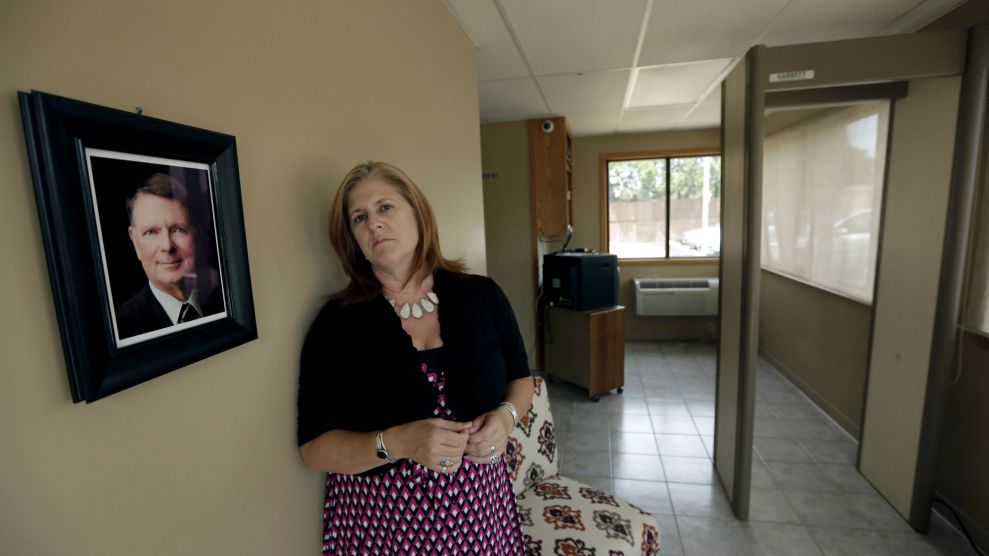
<a href="http://www.istockphoto.com/portfolio/Jovanmandic?facets=%7B%22pageNumber%22:1,%22perPage%22:100,%22abstractType%22:%5B%22photos%22,%22illustrations%22,%22video%22,%22audio%22%5D,%22order%22:%22bestMatch%22,%22filterContent%22:%22false%22,%22portfolioID%22:%5B9871321%5D,%22additionalAudio%22:%22true%22,%22f%22:true%7D">Jovanmandic</a>/iStock
The lady doctors are disappearing, right when women need them the most.
According to the American College of Nurse-Midwives, nearly half of all counties in the United States don’t have a single OB-GYN. That’s a problem because, as Pew Charitable Trusts reports, the overall population is expected to boom by 18 percent between 2010 and 2030, and that means more women and babies who need health care. Maternal deaths are already high in the United States compared with other developed countries—there are 18.5 deaths for every 100,000 live births, compared with 8.2 in Canada and 6.1 in Japan and the United Kingdom.
And while the number of births increases, the number of practicing OB-GYNs is projected to decrease even more. The American Congress of Obstetricians and Gynecologists (ACOG) estimates that the United States will face a shortage of OB-GYNs—6,000 to 8,800 fewer of them than necessary—by 2020. By 2050, that shortage will grow to 22,000.
Why? A few reasons. First, the number of medical students choosing to specialize in obstetrics and gynecology has remained relatively steady since 1980, but in the past couple of years, more than four out of five first-year OB-GYNs were women. That’s a change—like most medical specialties, the field used to be dominated by men. Thomas Gellhaus, president of ACOG, said female OB-GYNs tend to retire about a decade earlier than male OB-GYNs and tend to prefer part-time schedules.
Another factor: While OB-GYNs were once expected to be available around the clock, few doctors today will put up with such a demanding schedule. This change has given way to “laborists,” providers who work only in hospitals and focus strictly on labor and deliveries.
Finally, students going into obstetrics and gynecology today are choosing more lucrative subspecialties like gynecologic oncology and reproductive endocrinology and fertility, leaving a gap in routine gynecological care providers. Opting for a subspecialty over a general OB-GYN practice could mean up to a $100,000 annual difference in salary.
One potential solution: Let certified nurse-midwives pick up the slack. A California bill introduced by state Assemblywoman Autumn Burke would remove the requirement that nurse-midwives—registered nurses who have also completed an accredited nurse-widwifery program and passed an exam given by the American Midwifery Certification Board—practice under the supervision of doctors. Pew reports that the number of nurse-midwives in the United States has risen as states have relaxed restrictions—the profession has grown by 30 percent since 2012.

















